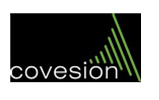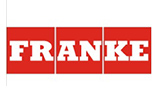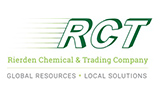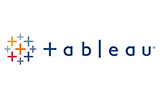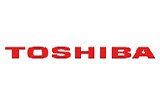Chapter 1 INTRODUCTION
1.1 Report description
1.2 Reasons for doing the study
1.3 Key benefits
1.4 Key market segmentation
1.5 Key audience
1.6 Research methodology
1.6.1 Secondary research
1.6.2 Primary research
1.6.3 Analyst tools and models
Chapter2 EXECUTIVE SUMMARY
2.1 CXO perspective
Chapter3 MARKET OVERVIEW
3.1 Market definition and scope
3.2 Key findings
3.2.1 Top factors impacting the cloud IAM market
3.2.2 Top winning strategies of cloud IAM market
3.2.3 Top investment pockets of cloud IAM market
3.3 Porters five forces
3.3.1 Moderate bargaining power of the supplier due to low brand loyalty, well-educated buyers and customized services
3.3.2 Low switching cost increases the bargaining power of buyers
3.3.3 Undifferentiated service leads to high competitive rivalry
3.3.4 Liberal government policy leads to high threat of new entrants
3.3.5 No feasible substitutes lead to low threat of substitute
3.4 Value chain analysis
3.5 Market share analysis, 2014
3.6 Market dynamics
3.6.1 Drivers
3.6.1.1 Increasing adoption of cloud services
3.6.1.2 Government compliances
3.6.1.3 Increasing cyber attacks
3.6.1.4 Centralized security and management
3.6.1.5 Increasing trend of BYOD and other mobility trends
3.6.2 Restraints
3.6.2.1 Security in cloud based environment
3.6.2.2 Lack of trust in cloud IAM provider
3.6.2.3 Lack of awareness
3.6.3 Opportunities
3.6.3.1 Technological advancement on encryption chip
Chapter 4 WORLD CLOUD IAM MARKET BY SERVICE
4.1 Introduction
4.1.1 Market size and forecast
4.2 User provisioning
4.2.1 Key market trends
4.2.2 Key growth factors and opportunities
4.2.3 Market size and forecast
4.3 Single sign-on
4.3.1 Key market trends
4.3.2 Key growth factors and opportunities
4.3.3 Market size and forecast
4.4 Access management
4.4.1 Key market trends
4.4.2 Key growth factors and opportunities
4.4.3 Market size and forecast
4.5 Multi factor authentication
4.5.1 Key market trends
4.5.2 Key growth factors and opportunities
4.5.3 Market size and forecast
4.6 Password management
4.6.1 Key market trends
4.6.2 Key growth factors and opportunities
4.6.3 Market size and forecast
4.7 Directory services
4.7.1 Key market trends
4.7.2 Key growth factors and opportunities
4.7.3 Market size and forecast
4.8 Governance and compliance management
4.8.1 Key market trends
4.8.2 Key growth factors and opportunities
4.8.3 Market size and forecast
Chapter 5 WORLD CLOUD IAM MARKET BY INDUSTRY VERTICALS
5.1 Introduction
5.1.1 Market size and forecast
5.1.2 BFSI
5.1.2.1 Market size and forecast
5.1.3 IT and telecommunication
5.1.3.1 Market size and forecast
5.1.4 Healthcare
5.1.4.1 Market size and forecast
5.1.5 Retail
5.1.5.1 Market size and forecast
5.1.6 Education
5.1.6.1 Market size and forecast
5.1.7 Media & entertainment
5.1.7.1 Market size and forecast
5.1.8 Others (energy, oil and gas, public sector and utilities)
5.1.8.1 Market size and forecast
Chapter 6 WORLD CLOUD IAM MARKET BY DEPLOYMENT TYPE
6.1 Introduction
6.1.1 Market size and forecast
6.2 Public cloud
6.2.1 Market size and forecast
6.3 Private cloud
6.3.1 Market size and forecast
6.4 Hybrid cloud
6.4.1 Market size and forecast
Chapter 7 WORLD CLOUD IAM MARKET BY GEOGRAPHY
7.1 Introduction
7.2 North America
7.2.1 Key market trends
7.2.2 Competitive scenario
7.2.3 Key growth factors and opportunities
7.2.4 Market size and forecast
7.3 Europe
7.3.1 Key market trends
7.3.2 Competitive scenario
7.3.3 Key growth factors and opportunities
7.3.4 Market size and forecast
7.4 Asia-Pacific
7.4.1 Key market trends
7.4.2 Competitive scenario
7.4.3 Key growth factors and opportunities
7.4.4 Market size and forecast
7.5 LAMEA
7.5.1 Key market trends
7.5.2 Competitive scenario
7.5.3 Key growth factors and opportunities
7.5.4 Market size and forecast
Chapter 8 COMPANY PROFILES
8.1 International Business Machines Corporation (IBM)
8.1.1 Company overview
8.1.2 Company snapshot
8.1.3 Business performance
8.1.4 Strategic moves and developments
8.1.5 SWOT analysis & strategic conclusions
8.2 Microsoft Corporation
8.2.1 Company overview
8.2.2 Company snapshot
8.2.3 Strategic moves and developments
8.2.4 SWOT analysis & strategic conclusions
8.3 CA, Inc.
8.3.1 Company overview
8.3.2 Company snapshot
8.3.3 Strategic moves and developments
8.3.4 SWOT analysis & strategic conclusions
8.4 Dell SecureWorks Inc.
8.3.1 Company overview
8.3.2 Company snapshot
8.3.3 Strategic moves and developments
8.4.4 SWOT analysis & strategic conclusions
8.5 Oracle Corporation
8.5.1 Company overview
8.5.2 Company snapshot
8.5.3 Business performance
8.5.4 Strategic moves and developments
8.5.5 SWOT analysis and strategic conclusion
8.6 Intel Corporation
8.6.1 Company overview
8.6.2 Company snapshot
8.6.3 Business performance
8.6.4 Strategic moves and developments
8.6.5 SWOT analysis and strategic conclusion
8.7 EMC Corporation
8.7.1 Company overview
8.7.2 Company snapshot
8.7.3 Business performance
8.7.4 Strategic moves and developments
8.7.5 SWOT analysis and strategic conclusion
8.8 Hewlett Packard Company
8.8.1 Company overview
8.8.2 Company snapshot
8.8.3 Business performance
8.8.4 Strategic moves and developments
8.8.5 SWOT analysis and strategic conclusion
8.9 Sailpoint Technologies, Inc.
8.9.1 Company overview
8.9.2 Company snapshot
8.9.3 Business performance
8.9.4 Strategic moves and developments
8.9.5 SWOT analysis and strategic conclusion




